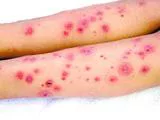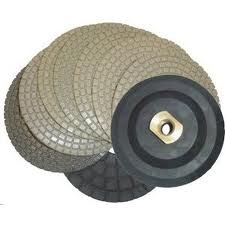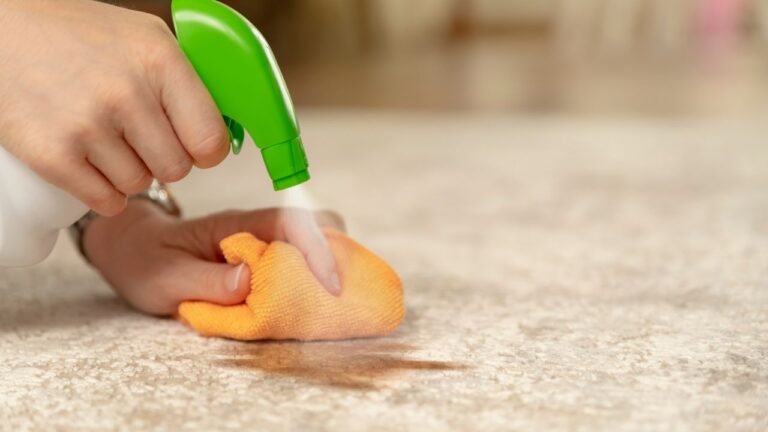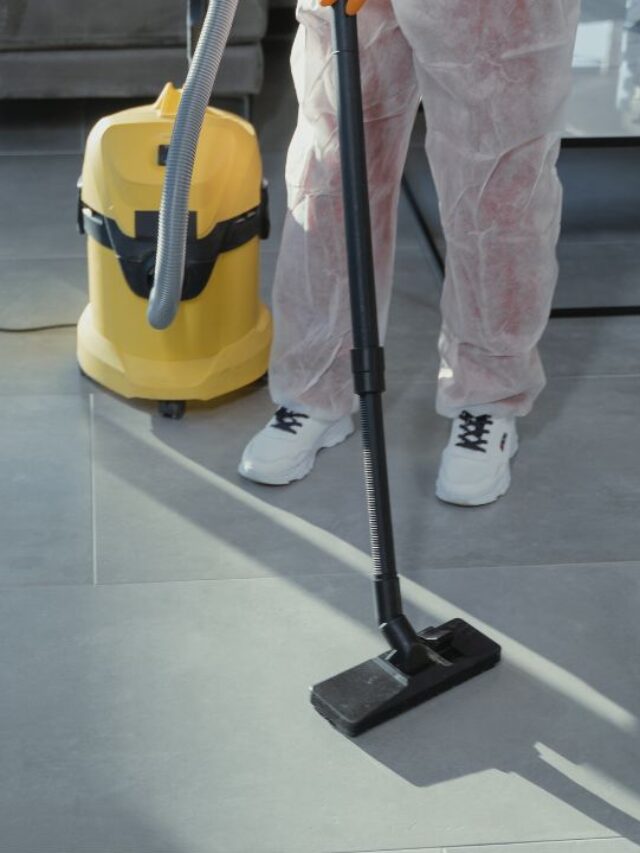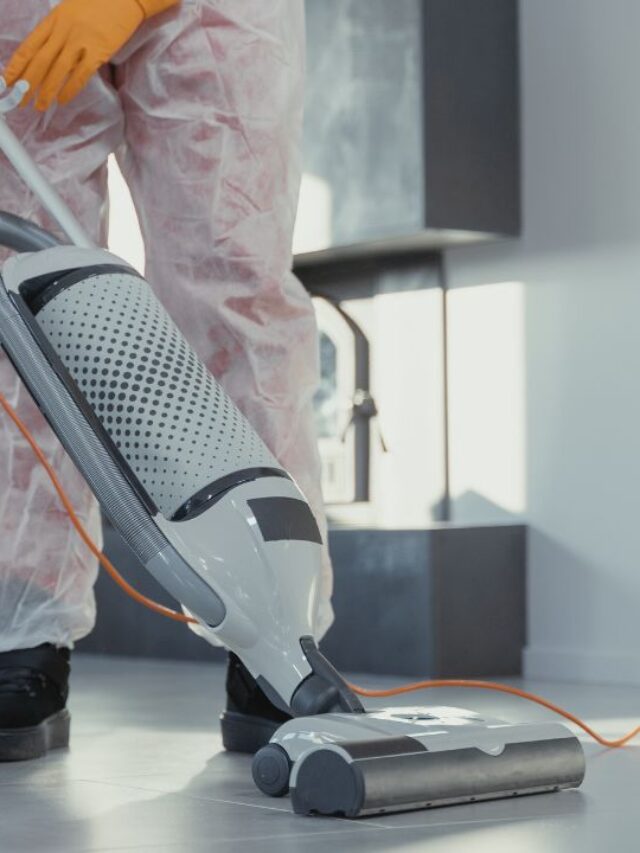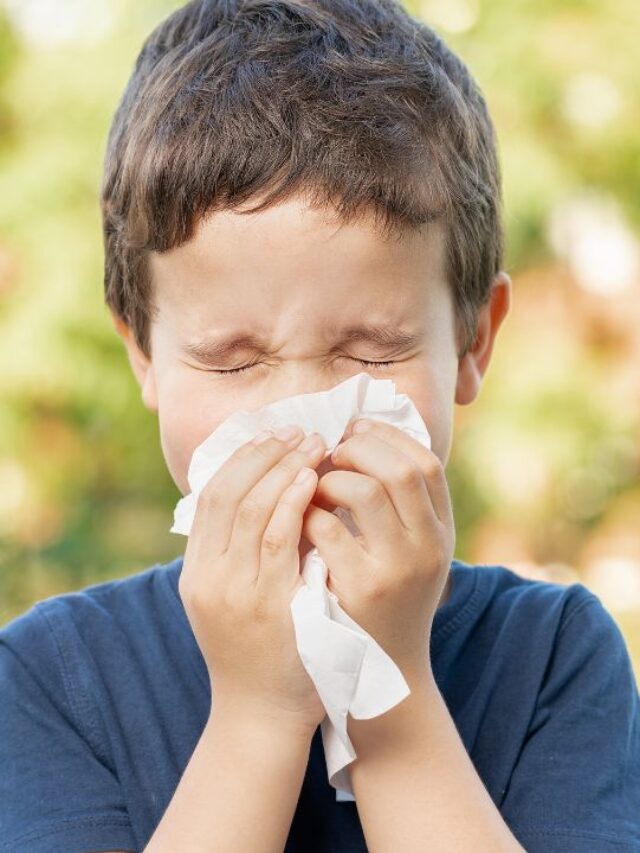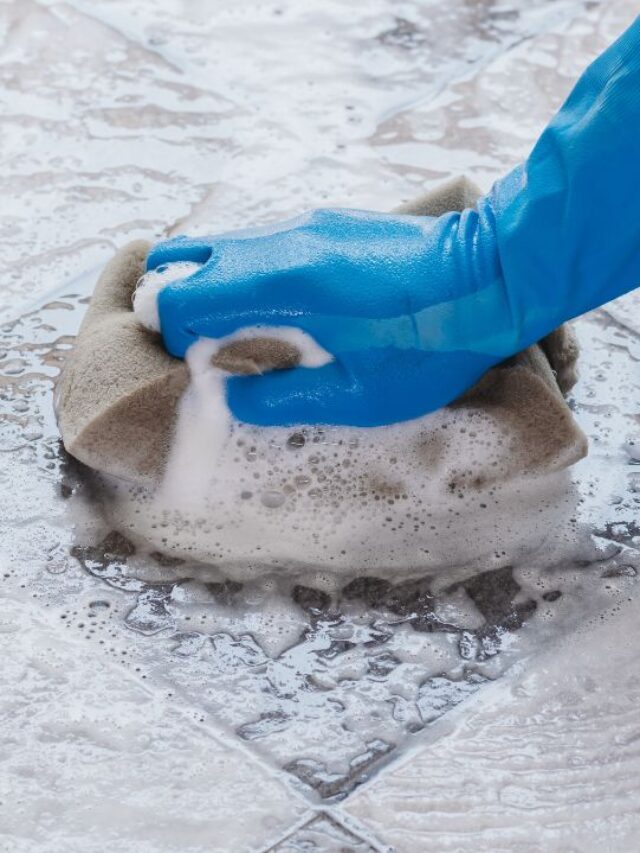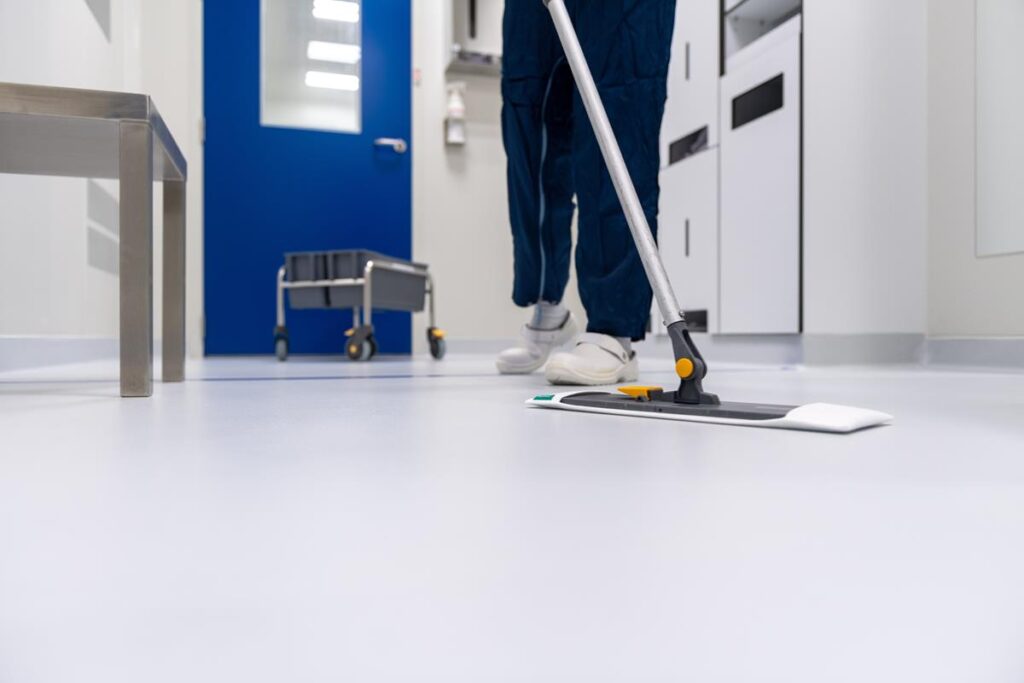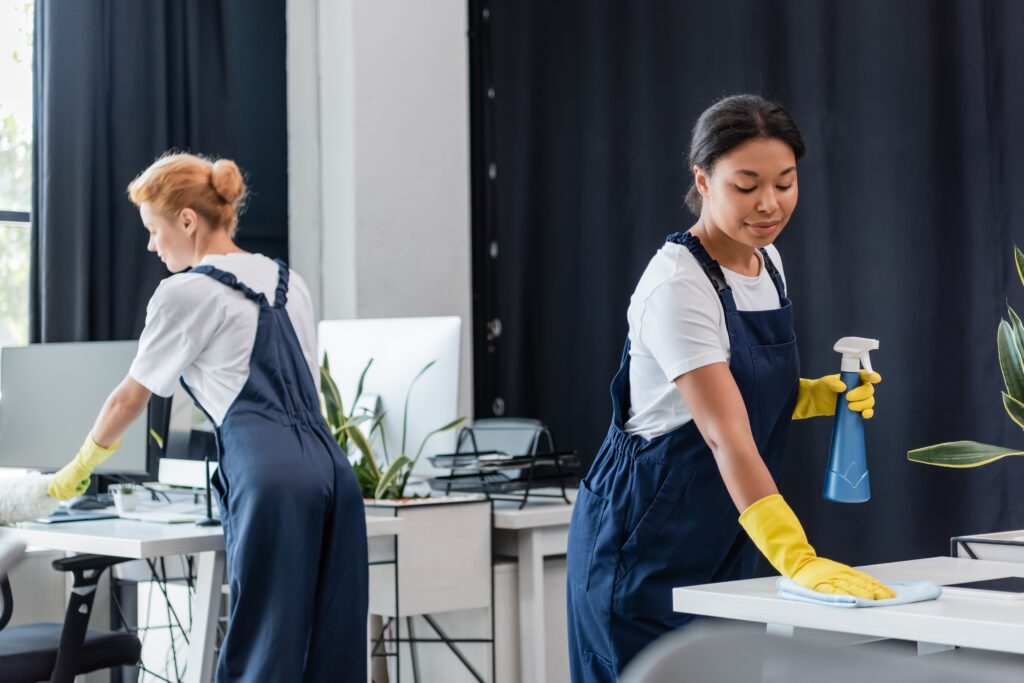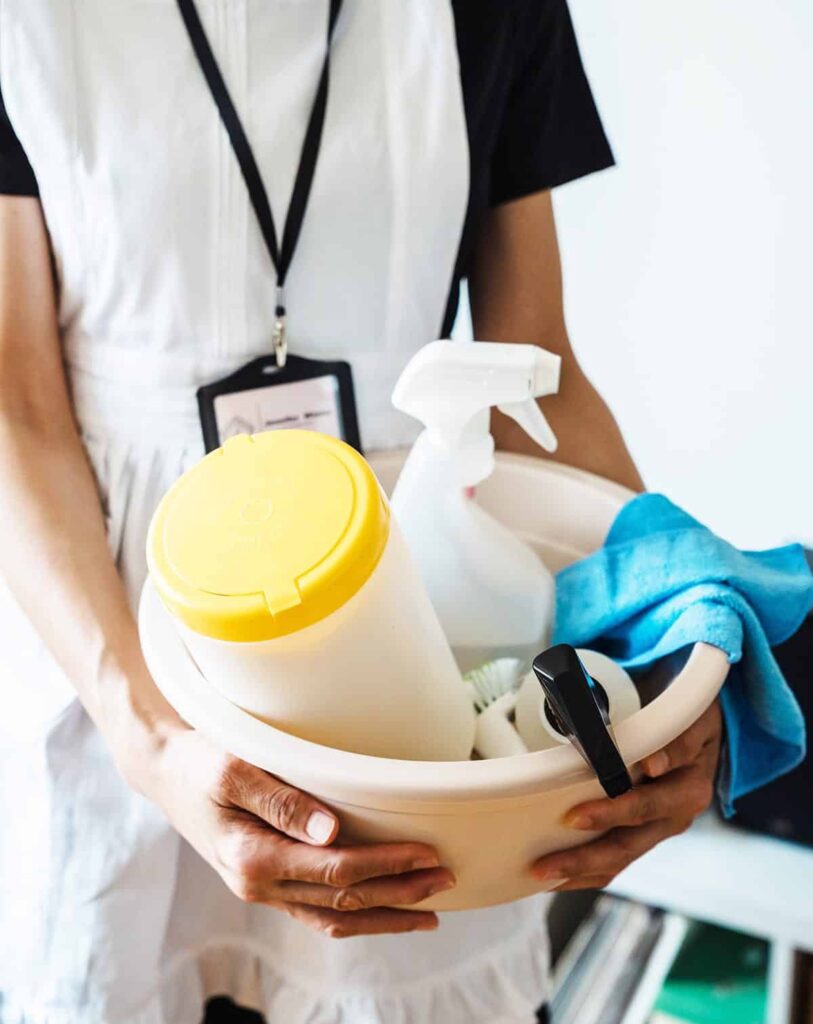Chemistry Behind Cleaning
When we walk into a spotless office, a fresh-smelling clinic, or a sparkling fitness studio, we rarely stop to think about the science that makes it all possible. But the chemistry behind cleaning plays a major role in how effective each wipe, spray, and scrub actually is. At Busy Bee, we know that understanding the chemical principles behind cleaning solutions is essential to delivering reliable, thorough results — especially in professional spaces where hygiene is non-negotiable. From high-traffic floors to delicate upholstery, chemistry helps us choose the right method for every mess.
We don’t just clean surfaces. We apply chemical knowledge to select products that sanitize, disinfect, and remove stains without damaging your materials or leaving residues. It’s this understanding that elevates our services and helps us maintain excellence in a range of environments — from art galleries to religious buildings, banks to nonprofit shelters.
Why pH Levels Matter in Cleaning
Let’s start with one of the most fundamental principles in cleaning science: pH. The pH scale ranges from 0 to 14, where 7 is neutral. Anything below 7 is acidic, and anything above is basic or alkaline. Why does this matter in professional cleaning? Because every stain, soil, and surface interacts differently based on the pH of the cleaning agent.
Keep Your Office Spotless with Our Free Office Cleaning Checklist!
Want to make sure you’re covering all the essential cleaning tasks? Our comprehensive guide covers all essential cleaning tasks, from daily tidying to deep cleaning tips. Make sure no spot is missed and create a healthier, more organized workspace today!
Acidic cleaners (pH 1–6) are great for dissolving mineral buildup, rust, and limescale — the kind of gunk you might find in bathroom fixtures, on tile grout, or inside water fountains at schools or fitness centers. Alkaline cleaners (pH 8–14), on the other hand, are designed to break down organic substances like grease, oils, fats, and proteins — perfect for cafeterias, kitchens, and gym locker rooms.
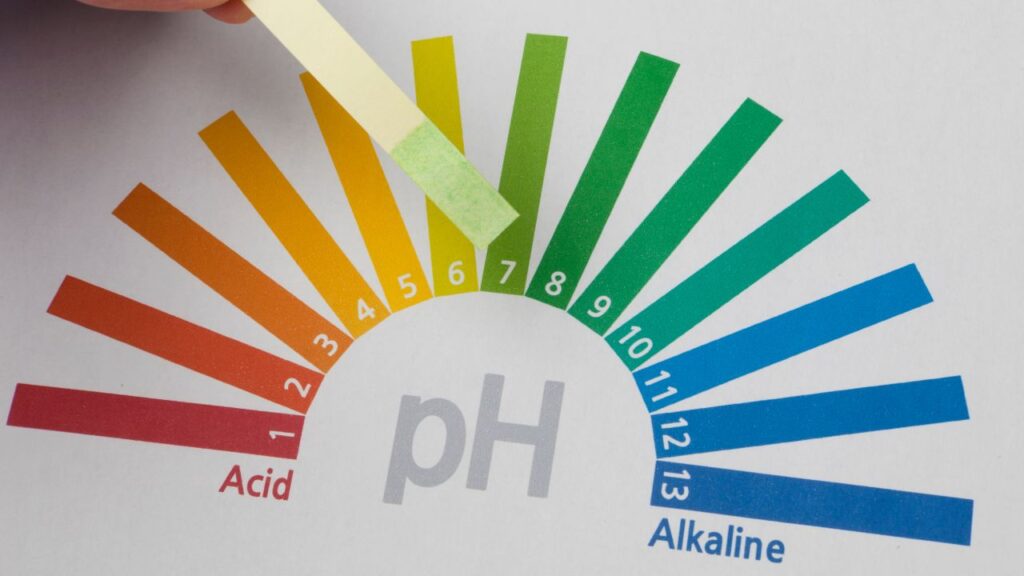
At Busy Bee, we assess surfaces before selecting our products. Using a cleaner with the wrong pH can lead to damage. For example, applying a highly acidic product to a delicate marble surface in a bank lobby could cause permanent etching. That’s why we train our staff to understand how pH influences chemical performance — and how to safely match products with tasks.
Understanding the chemistry behind cleaning at this level ensures that we don’t just clean — we protect and preserve your space.
Surfactants: The Unsung Heroes of Commercial Cleaning
Surfactants (short for “surface-active agents”) are another key part of the cleaning puzzle. These compounds reduce the surface tension of water, allowing it to spread out and penetrate grime instead of simply beading off. Imagine trying to clean a greasy stovetop or a fingerprint-smeared glass door with plain water — it won’t cut it. That’s where surfactants come in.
Surfactants have two ends — one hydrophobic (water-repelling) and one hydrophilic (water-attracting). This structure allows them to bond with both water and oily or greasy substances, effectively lifting dirt away from surfaces so it can be rinsed or wiped away. In corporate environments where cleanliness is part of the brand image — like upscale retail stores or high-end event venues — the role of surfactants is critical.

Whether we’re scrubbing yoga mats at a wellness studio or deep-cleaning break room appliances in an office building, we rely on surfactant chemistry to break through build-up without needing harsh abrasives that could harm surfaces. It’s another layer of how understanding the chemistry behind cleaning gives us a performance edge.
Surfactants also help in rinsing — they prevent soils from redepositing by suspending them in the water. That means once we’ve lifted dirt and grease, it stays gone. This is especially important in medical offices or shelters where contamination risks are higher.
Different Stains, Different Chemistry
Not all stains are the same — and not all cleaners work on every stain. This is where knowledge of stain composition becomes essential. In our day-to-day commercial cleaning, we encounter three broad categories of stains:
- Inorganic stains, like rust, hard water deposits, or ink from markers.
- Organic stains, such as food spills, blood, sweat, mold, or pet waste.
- Pigment-based stains, like wine, grass, or makeup, which involve complex molecules that absorb and reflect specific light wavelengths.
Each type reacts differently to chemical treatments. Inorganic stains often require acidic solutions to dissolve mineral components. Organic stains, made of proteins or fats, respond better to alkaline cleaners or enzymatic formulas that break down complex molecules. Pigments, on the other hand, may need oxidizing agents or solvents to disrupt their chemical structure and lift the color.
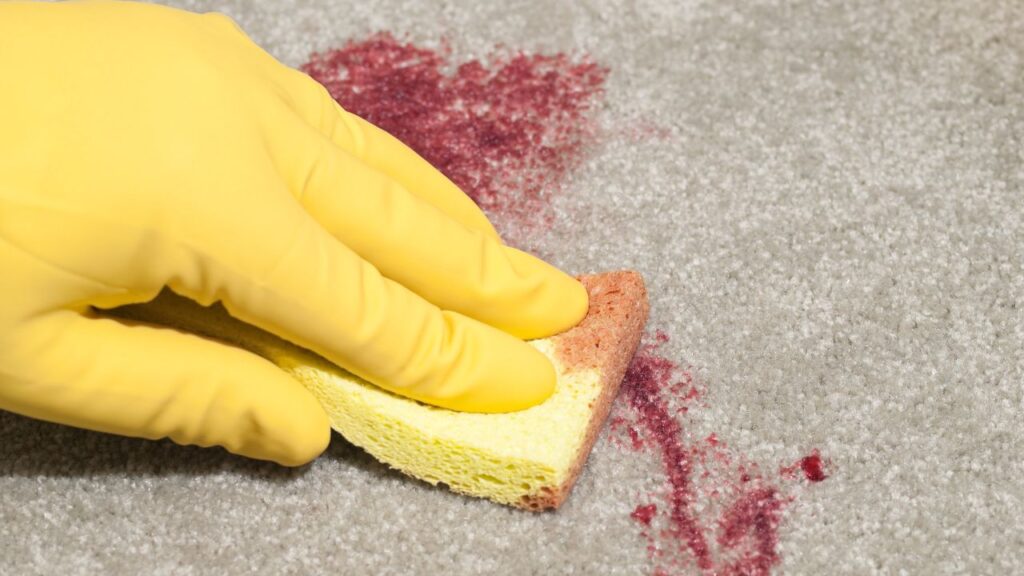
At Busy Bee, we don’t just use trial and error. Our team is trained to recognize what kind of stain they’re dealing with and apply the right chemistry to remove it efficiently — without scrubbing blindly or using overly aggressive methods that could lead to damage. Knowing the chemistry behind cleaning allows us to minimize risks, save time, and deliver visibly better results.
This knowledge is especially vital when working with sensitive surfaces — such as fabric-covered office chairs, antique furniture in religious spaces, or velvet curtains in event venues. Different materials demand different care, and chemistry guides our every move.
Chemical Terminology That Translates Into Cleaner Spaces
In the world of cleaning, certain chemical terms might sound like jargon — but they’re actually the secret to why our services work so well. Here’s how some key concepts translate into action in your facility:
- Hydrophobic materials repel water. Think oil, grease, and certain plastics. To clean them, we need surfactants and solvents that can break through this barrier.
- Hydrophilic substances attract and dissolve in water — like sugars, some food residues, and water-based paints. These can often be cleaned with neutral pH solutions.
- Detergency is our ability to separate soils from surfaces. This depends on product choice, dwell time, and agitation (like scrubbing or brushing).
- Emulsification is when we take greasy substances and break them into tiny droplets, making them easier to rinse away — crucial in kitchens and gyms.
- Dispersing agents keep particles suspended so they don’t settle back down or cling to cleaning equipment.
- Solubilizing agents dissolve certain soils completely, removing them at the molecular level.
Every one of these terms plays a role in our daily operations. We don’t throw cleaning products at a problem and hope for the best — we apply techniques based on solid chemical understanding. That’s how we make sure high-touch areas like doorknobs, elevator buttons, and reception desks are truly clean — not just wiped down.
It’s this application of the chemistry behind cleaning that helps us deliver uniform quality, minimize onboarding time, and handle even time-sensitive requests with precision.e, and long-lasting. That’s the difference between basic janitorial work and professional custodial care.
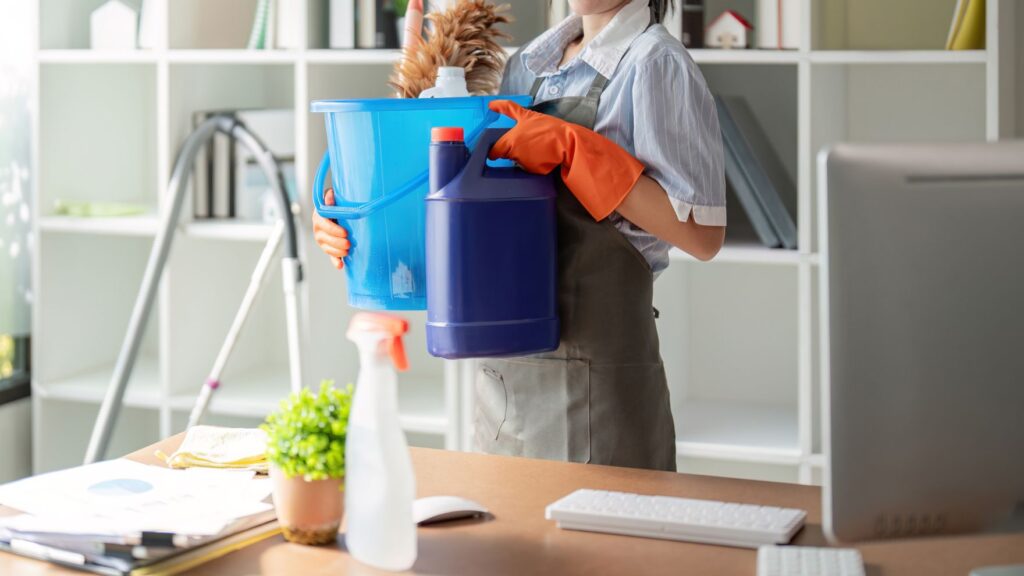
Conclusion
In commercial and corporate spaces, cleaning is more than just appearance — it’s about health, safety, and preserving your assets. The chemistry behind cleaning isn’t something we take lightly at Busy Bee. It’s what empowers us to deliver consistent, professional results across a wide range of industries.
By understanding the interaction between products, surfaces, and soils, we avoid costly mistakes, reduce downtime, and ensure compliance with safety standards — especially in sensitive environments like clinics, nonprofits, and educational centers. Every chemical we use is chosen for its effectiveness, safety profile, and suitability for your specific surfaces and needs.
Contact Us
Get a quote
Your satisfaction is our priority, and we’re here to assist. Reach out to Busy Bee effortlessly by contacting us. Whether you have questions, need a custom quote, or want to discuss your cleaning requirements, our friendly team is ready to respond promptly. Connecting with us is the first step towards a cleaner and more comfortable environment for your home or business.
Call us for a quote today!
Contact Us
Get a quote
Your satisfaction is our priority, and we’re here to assist. Reach out to Busy Bee effortlessly by contacting us. Whether you have questions, need a custom quote, or want to discuss your cleaning requirements, our friendly team is ready to respond promptly. Connecting with us is the first step towards a cleaner and more comfortable environment for your home or business.



